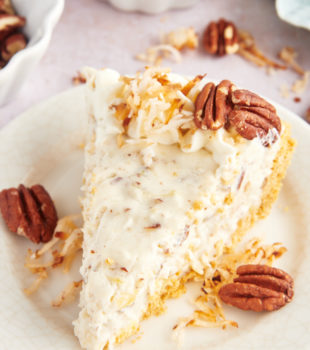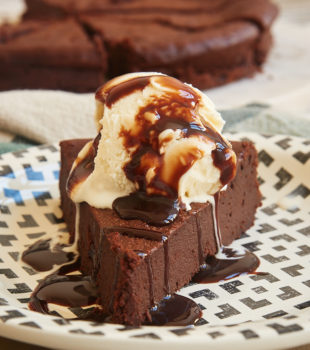These simple tips will help you zest and juice lemons, whether you have special tools or not!

Table of contents
Tips for Zesting and Juicing Lemons
Lemon treats are among my favorites. And judging by the popularity of some recipes here on BoB, they’re a favorite for many of you, too! I love baking with lemon year-round, from a refreshing summer dessert to a winter treat with some zing.
Luckily, it’s quite simple and quick to get both zest and juice from lemons. These tips will help you get the most out of your lemons so you can make something deliciously lemony!
Whether you like a little hint of lemon or prefer a mouth-puckering amount, it’s good to brush up on your techniques for zesting and juicing lemons.
Please note that these tips all apply to the types of lemons commonly found in grocery stores. These are usually Eureka or Lisbon lemons. While there are many other varieties out there, these common ones are the kinds most often used for baking.
How to Choose a Lemon
Pick a lemon that has no blemishes on its peel. A lemon with a pebbly texture usually has a thicker skin and will be easier to zest; however, a lemon with a thinner, smoother skin will usually contain more juice.
Rinse the lemon with water and dry with a soft towel. Some lemons have an artificially-added wax coating, so try a rinse or soak in warm water to remove that if you’re planning to zest the lemon.
What is Lemon Zest?
Lemon zest, or any citrus zest, is the thin outer layer of the fruit. It’s also called the flavedo, but you’re not likely to see it referenced as that. The zest is the bright yellow of the lemon, while a lime’s zest is green and an orange’s zest is orange. It sits on top of the white pith that surrounds the fruit.
How to Zest a Lemon
One of the best tools for zesting a lemon is a small rasp-style grater, or microplane. It consists of several small raised teeth that are rubbed against the lemon peel to remove the zest. You can hold the lemon in your non-dominant hand and rub the microplane along the outside of the lemon to grate the zest. Or you can place the microplane over a bowl or cutting board, and rub the lemon over the grater.
There are also channel zesters available that will create ribbons of zest that can be chopped into small pieces. The fine side of a box grater can also be used.
If you don’t have a microplane, citrus zester, or box grater in your kitchen, you can carefully remove the peel with a sharp paring knife or a vegetable peeler, and then cut the thin strips into smaller pieces on a cutting board.
Remember that the finer the zest, the stronger the lemon flavor will be. That’s one of the reasons why I prefer using a microplane. I also find that tool to be one of the easiest ways to get a lemon zested quickly and efficiently. If you find yourself needing citrus zest often, then it’s probably worth investing in one of these kitchen tools to make the process easier.
When zesting the lemon, be sure to zest just the peel and not the pith, which is the white layer underneath the peel. That white part is very bitter, and you definitely don’t want that in your baked goods.
Use the zest as soon as possible after it has been removed, as the flavor will begin to dissipate as soon as it is removed. However, you can store leftover zest in an airtight container in the freezer.
How to Juice a Lemon
Juicing a lemon will be easier if the lemon is softened a bit. Simply, roll the lemon between your hand and your countertop for a few seconds to soften it. You can also soften the lemon by heating it in the microwave for about 20-30 seconds. If you’re also zesting the lemon, do this before you zest.
After the lemon has been zested, either cut it in half or in quarters to expose the inside of the lemon.
Lemons can be juiced in many ways. The simplest way is just to squeeze it by hand. There are also several tools for juicing. These range from small handheld juicers to larger electric juicers. I’ve had a few of these over the years, but I usually just default to juicing by hand.
In the category of “things I shouldn’t have to say, but I will anyway,” take care to remove any seeds from the juice before using.
How to Store Lemon Juice
Fresh lemon juice can be stored in the refrigerator for up to a week.
If you have a good bit of excess lemon juice, it can be placed in ice trays and frozen for up to 3 months. Just thaw at room temperature or give it a few seconds in the microwave before using. That’s a great way to have fresh lemon juice whenever you need it!
How Much Zest and Juice in a Lemon
A medium-sized lemon will yield approximately 1 tablespoon of zest and 3-4 tablespoons of juice.
You may get a little more or less depending on the lemons you’re using and your own juicing techniques. Your technique, tools, and diligence will have an affect, too. But you can use this estimate when you’re trying to figure out how many lemons you need for a recipe that needs zest and/or juice.
How to Zest and Juice Limes and Oranges
These same techniques described above can be used when juicing limes, oranges, grapefruit, and other citrus fruits. Of course, their sizes are different from lemons, so you’ll get a different yield.
A medium lime will yield about 2 teaspoons of zest and 2 tablespoons of juice, while a medium orange will yield about 2 tablespoons of zest and 1/4 cup of juice. A medium grapefruit will produce about 3 tablespoons of zest and about 3/4 cup of juice.
Meyer Lemons and Key Limes
The lemons and limes we’ve been discussing are the most common varieties you’re likely to find in your supermarket. Eureka lemons are the oval lemons that likely come to mind when you think about lemons. Persian limes are the most commonly found variety for most of us.
In contrast, Meyer lemons are smaller than their Eureka counterparts and will yield about 2 teaspoons of zest and a tablespoon of juice. Key limes are also smaller than the more widely available Persian limes and produce about 1 teaspoon of zest and 2 tablespoons of juice.
How to Use Lemon Zest and Juice in Baking
Even small amounts of fresh lemon juice and zest can add significant flavor to baked goods. In just a matter of minutes, you can have fresh juice and zest to use in your baking recipes.
Lemon zest is often used in recipes to give them a little flavor zing. Just a small amount will add some flavor interest to so many baked goods, even ones that don’t have their flavor focus squarely on citrus.
Lemon peel is often used in thin strips as a garnish for baked goods, cocktail garnishes, and more.
For most lemon treats, lemon juice is usually added along with other liquid ingredients. Many recipes with a strong lemon flavor will use both lemon juice and zest.
Recipes Made with Fresh Lemon Zest and Juice
Ready to get baking? Try some of these favorite lemon recipes!
- Lemon Bundt Cake
- Lemon Bars
- Mini Lemon Pound Cakes
- Lemon Bread
- Lemon Icebox Pie
- No-Bake Lemon Cheesecakes
- Lemon Cream Cake
- Lemon Almond Crumb Bars
- Ginger Lemon Hand Pies
- Lemon Sheet Cake
Frequently Asked Questions
Lemon zest is the brightly colored, thin outer layer of the lemon. Simply put, it’s the yellow part of the skin. Lemon peel or lemon rind is the entire skin, consisting of the zest plus the white layer underneath.
While microplanes and citrus zesters are handy tools, they aren’t an absolute requirement. The finest side of your box grater will work. You can also use a paring knife or vegetable peeler to remove strips of the zest and then cut them into very small pieces.
A medium lemon will usually yield 3 to 4 tablespoons of juice.
You’ll get about a tablespoon of zest from a medium lemon.
Bake or Break is a participant in the Amazon Services LLC Associates Program, an affiliate advertising program designed to provide a means for us to earn fees by linking to Amazon.com and affiliated sites.










4 Comments on “How to Zest and Juice Lemons”
This is something my dad told me about lemons & I thought I’d pass it along. When choosing your lemons, pick the ones that you can squeeze easily. You can tell they have a thinner skin therefore you’ll get more juice from them. I also agree that a microplane is perfect for zesting lemons, limes or oranges.
Thanks for sharing your tip, Clara!
do you use lemon zest in all cake recipes
Hi, Lorna. Lemon zest is great in many cake recipes where that flavor is complementary, but I wouldn’t want to add that flavor to all cake batters.